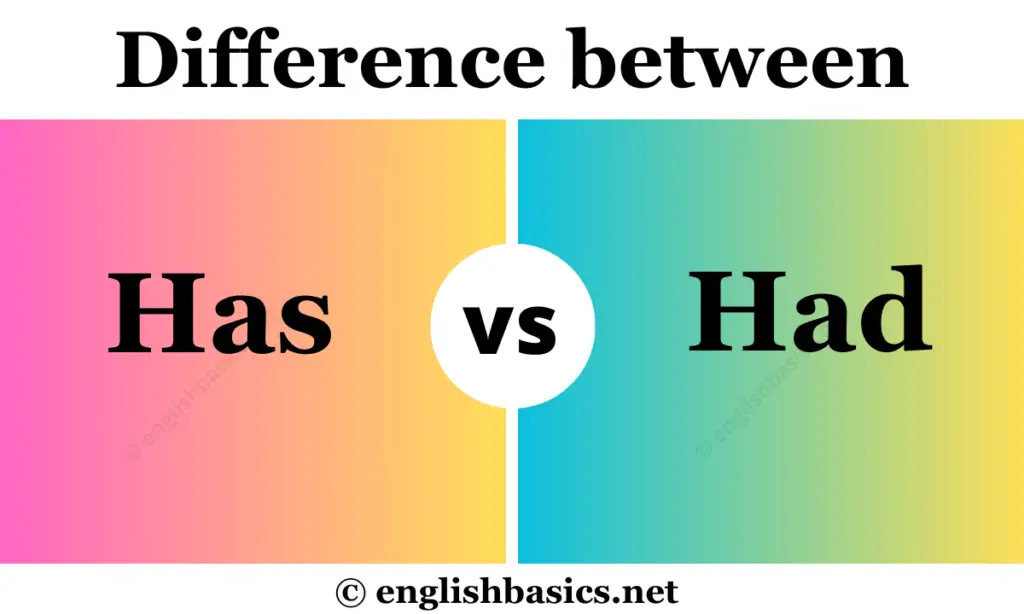“Has” and “Had” are both conjugations of the verb “to have. “ But how and where it must be applied or used can be confusing sometimes. Even native speakers sometimes face the problem of distinguishing their usage and meanings.
“To have” means to possess, hold, contain, or own something. “Has” and “Had” are both used with third-person singular pronouns to indicate the verb “to have“. They are also used as auxiliary or helping verbs to form perfect tenses.
Let us discuss them in detail to understand them better.

Has vs Had – Difference
Has
“Has” is a transitive verb. A transitive verb is a verb that accepts one or more objects and requires a direct subject. It is used as the third-person singular present tense of the verb “to have“. In simple language, “Has” is used when an action is expressed in the present tense and is related to a single pronoun like he, she, or it.
For example, if we say, “she has a cat.” Here, the word “cat” is the direct object of “has,” and “has” is used to indicate “to have” or possession of the cat at present by the pronoun “she,” which is a singular third person.
Let us look at some other examples;
- He has a big nose.
- She has a pencil and a pen.
- Allen has a huge dog.
“Has” can sometimes also be used when we refer to someone directly by their name.
Had
“Had,” however, is the past tense of the transitive verb “has.” It describes “to have” in a past form. It is also used with singular third-person pronouns but in the past tense. It expresses an action in the past tense. It is also used to indicate expressions of being done with or deceived.
Let us look at some examples;
- He had a nice talk with the principal.
- She had a cat, but it ran away.
- You’ve had it.
Has and Had as Helping Verbs
“Has” and “had” form perfect tenses when used as helping verbs. A perfect tense is a verb form that expresses or indicates an action that is completed.
“Has” forms a present perfect tense of the verb “to have” when used with a past participle. It indicates an action that was completed in the past, but the results are still continuing in the present. For example;
- She has learned to cook.
- He has already come.
“Had” on the other hand, forms a past perfect tense of the verb “to have” when used with a past participle. It indicates an action that was started and completed in the past. For example;
- She had written many novels.
- We had lived in that house before.
It is to observe that, when forming Past Perfect Tense, the rule (Had + past participle) will remain the same with both singular and plural subjects.
To have a quick recap, we learned that “has” and “had” are both conjugations of the verb “to have“. “Has” is the third-person singular present form of “to have,” and “had” is the past form of “has.” They both act as helping verbs by forming perfect tenses where “has” is used in the present perfect tense and “had” is used in the past perfect.
Here are these subtle differences between has and had that are very important to remember to improve your grammar.